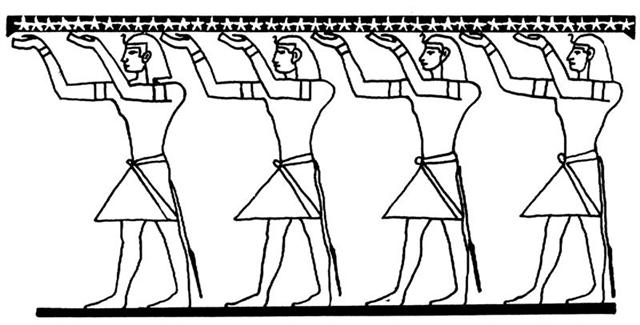214 (as for instance in the number of potato species
registered by the old woman who knew) was 4 more
than 210 (= 7 * 60 / 2). These 4 were presumably
representing the 4 corners of the Earth.
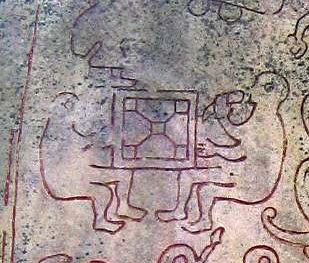
... Men's spirits were thought to dwell in the Milky
Way between incarnations. This conception has been
handed down as an Orphic and Pythagorean tradition
fitting into the frame of the migration of the soul.
Macrobius, who has provided the broadest report on
the matter, has it that souls ascend by way of
Capricorn, and then, in order to be reborn, descend
again through the 'Gate of Cancer'. Macrobius talks
of signs; the constellations rising at the
solstices in his time (and still in ours) were
Gemini and Sagittarius: the 'Gate of Cancer' means
Gemini. In fact, he states explicitly (I,12.5) that
this 'Gate' is 'where the Zodiac and the Milky Way
intersect'. Far away, the Mangaians of old (Austral
Islands, Polynesia), who kept the precessional clock
running instead of switching over to 'signs', claim
that only at the evening of the solstitial days can
spirits enter heaven, the inhabitants of the
northern parts of the island at one solstice,
the dwellers in the south at the other
... Considering the fact that the crossroads of
ecliptic and Galaxy are crisis-resistant, that is,
not concerned with the Precession, the reader may
want to know why the Mangaians thought they could go
to heaven only on the two solstitial days. Because,
in order to 'change trains' comfortably, the
constellations that serve as 'gates' to the Milky
Way must 'stand' upon the 'earth', meaning that they
must rise heliacally either at the equinoxes or at
the solstices. The Galaxy is a very broad highway,
but even so there must have been some bitter
millenia when neither gate was directly available
any longer, the one hanging in midair, the other
having turned into a submarine entrance ...
Down on the southwestern (toga) corner of the
Easter Island was the corner of death, but it was also
a corner of
birth because here the sea swallows (manu tara)
arrived to announce the return of summer:
... The king arose from his
sleeping mat and said to all the people: 'Let us go
to Orongo so that I can announce my death!'
The king climbed on the rock and gazed in the
direction of Hiva, the direction in which he
had travelled (across the ocean). The king said:
'Here I am and I am speaking for the last time.' The
people (mahingo) listened as he spoke. The
king called out to his guardian spirits (akuaku),
Kuihi and Kuaha, in a loud voice: 'Let
the voice of the rooster of Ariana (→
Arianrhod → Gemma, α
Cor. Bor. → St John's Day) crow softly.
The stem with many roots (i.e.,
the king) is entering!' The king fell down, and
Hotu A Matua died
...
... During the birdman ceremonies
at Orongo, a piece of sandalwood was tied to
the arm with which the victorious birdman held up
the egg of the sooty tern ...
... It grew light [he otea], and King Hotu
said the following [penei ē] to Veri Hina:
'Keep your eyes on me, (you and) the son-in-law, as
soon as I leave. If the terns (manu tara) fly
(high) above me (hiri), I shall continue to
live. But if the terns dive (down) on me (vevero),
then I have died. Then you (you and the son-in-law)
shall go on your way!' [E:1002]
The return of sun light south of the equator
indicated
the Sun had left the northern hemisphere. There was
a phase (face) shift measuring around 180 days.
But not exactly 180 days because the whole Sun year
measure was around 365 days, which fact was documented
in ancient Egypt:
... Nut, whom the Greeks sometimes identified with
Rhea, was goddess of the sky, but it was debatable
if in historical times she was the object of a
genuine cult. She was Geb's twin sister and, it was
said, married him secretly and against the will of
Ra. Angered, Ra had the couple brutally separated by
Shu and afterwards decreed that Nut could not bear a
child in any given month of any year. Thoth,
Plutarch tells us, happily had pity on her. Playing
draughts with the Moon, he won in the course of
several games a seventy-second part of the Moon's
light with which he composed five new days. As these
five intercalated days did not belong to the
official Egyptian calendar of three hundred and
sixty days, Nut was thus able to give birth
successively to five children: Osiris, Haroeris
(Horus), Set, Isis and Nepthys ...
These 5 extra (intercalendar)
days were days of birth. They belonged at the
threshold of the new year.
However, the Egyptians had
also 4 gods who seem to have supported 42 decans in the night sky roof
("belts of stars extending round the heavens, the
risings of which followed each other by ten days or
so" according to Allen).
Maybe this was due to the difference between 364 (=
4 * 91) and 360.
Similarly the Mayas had 5 gods who like pillars
supported the daytime sky roof.
... On February 9 the Chorti
Ah K'in, 'diviners', begin the agricultural
year. Both the 260-day cycle and the solar year are
used in setting dates for religious and agricultural
ceremonies, especially when those rituals fall at
the same time in both calendars. The ceremony begins
when the diviners go to a sacred spring where they
choose five stones with the proper shape and color.
These stones will mark the five positions of the
sacred cosmogram created by the ritual. When the
stones are brought back to the ceremonial house, two
diviners start the ritual by placing the stones on a
table in a careful pattern that reproduces the
schematic of the universe. At the same time, helpers
under the table replace last year's diagram with the
new one. They believe that by placing the cosmic
diagram under the base of God at the center of the
world they demonstrate that God dominates the
universe. The priests place the stones in a very
particular order. First the stone that corresponds
to the sun in the eastern, sunrise position of
summer solstice is set down; then the stone
corresponding to the western, sunset position of the
same solstice. This is followed by stones
representing the western, sunset position of the
winter solstice, then its eastern, sunrise position.
Together these four stones form a square. They sit
at the four corners of the square just as we saw in
the Creation story from the Classic period and in
the Popol Vuh. Finally, the center stone is placed
to form the ancient five-point sign modern
researchers called the quincunx
...

The date of All Hearts - presumably when all the cycles
were reset to zero, i.e. were beginning anew - came 5 days after February 9.
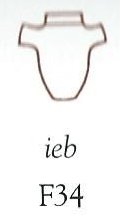
|
Egyptian
nfr |
 |
Phoenician
teth |
 |
Greek
theta |
Θ (θ) |
|
... The form of the
letter θ
suggests a midline ('waist'), although
the origin of θ is the Phoenician
tēth which means 'wheel'. This in
turn could have originated from a glyph
named 'good' which in Egypt was nfr
...
... θ is
the last star in the Ara constellation,
and the ancient meaning of this letter
was described as a wheel by the
Phoenicians but for the Egyptian it
meant 'good'. When the wheel of
time has come full cycle around and the
upside down fire-altar is in the past
the times ahead should be good (or lucky
Sa'ad)
...
According
to Wilkinson nefer
originally depicted the throat and heart
of a sheep:

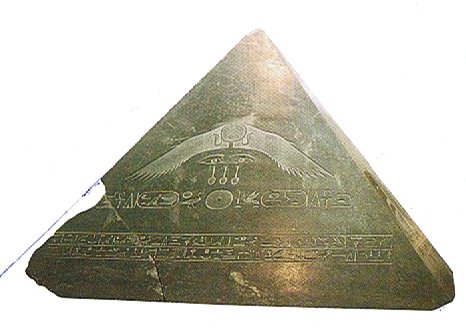 |
... Similarly to the sun the heron rose up from the
primary waters, and its Egyptian name, benu,
was probably derived from the word weben,
to 'rise' or 'shine'. This magnificent wader was
also associated with the inundations of the Nile
...
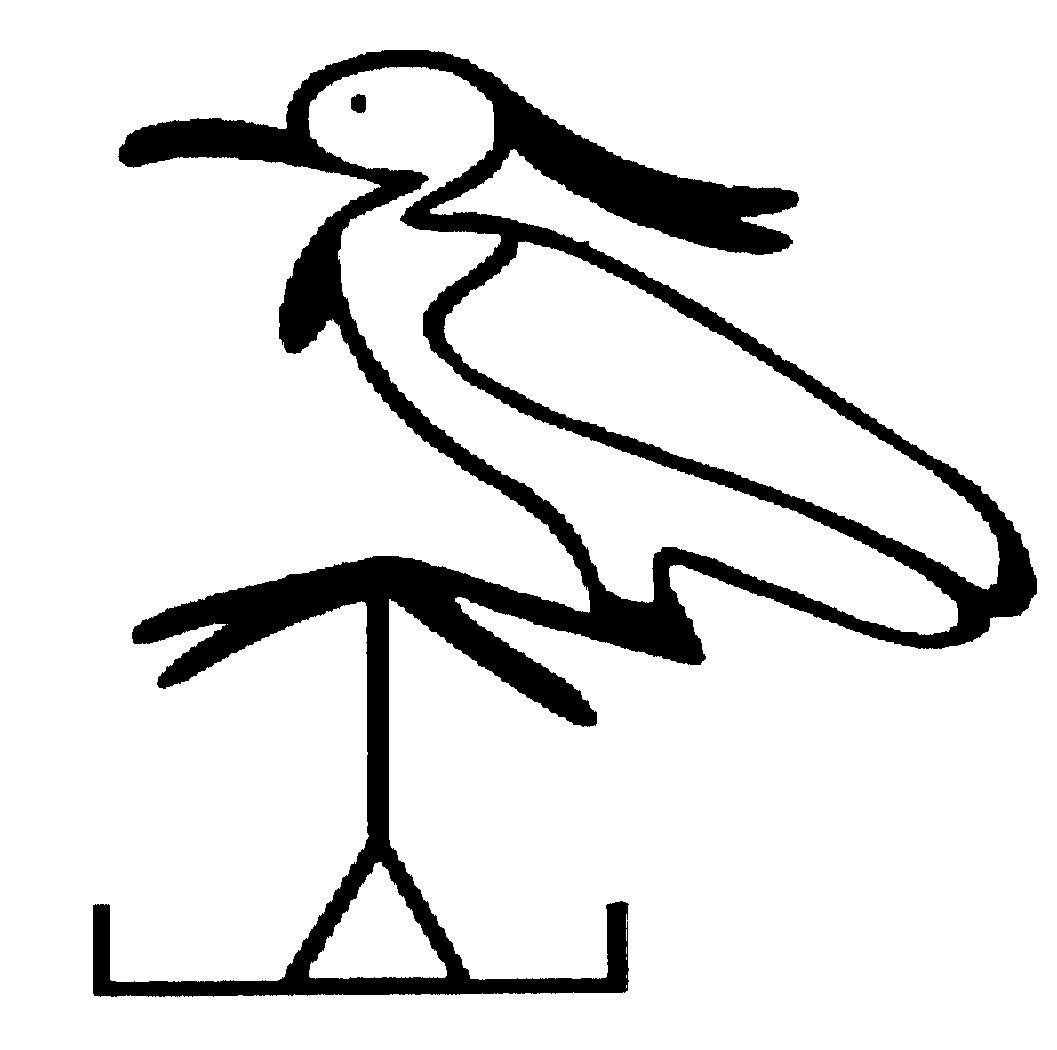
|
 |
Maitaki. Clean,
neat, pure, pretty, nice, beautiful,
handsome; tagata rima maitaki,
clean-handed man, correct man. Vanaga.
1. Good. Henua maitaki = the good
earth. 2. Shine. Marama maitaki =
the shining moon. Barthel. Ce qui est
bon. Jaussen according to Barthel.
Meitaki, good, agreeable,
efficacious, excellent, elegant, pious,
valid, brilliant, security, to please,
to approve (maitaki); ariga
meitaki, handsome, of pleasant mien;
mea meitaki ka rava, to deserve;
meitaki ke, marvelous, better.
Hakameitaki, to make good, to amend,
to do good, to bless, to establish.
Meitakihaga, goodness. PS Pau.:
maitaki, good. Mgv.: meitetaki,
beautiful, good. Mq.: meitai,
good, agreeable, fit, wise, virtuous.
Ta.: maitaiki, good, well. Niuē:
mitaki,
good. Maitakia,
clean. Churchill. |
|
maitaki |
|
...
In Hindu
legend there was a mother goddess called
Aditi, who had seven offspring.
She is called 'Mother of the Gods'.
Aditi, whose name means 'free,
unbounded, infinity' was assigned in the
ancient lists of constellations as the
regent of the asterism Punarvasu.
Punarvasu is dual in form and
means 'The Doublegood Pair'. The
singular form of this noun is used to
refer to the star Pollux. It is not
difficult to surmise that the other
member of the Doublegood Pair was Castor
...
...
Among the
Nahyssan of S. Carolina time was
measured and a rude chronology arranged
by means of strings of leather with
knots of various colour, like the
Peruvian quipos. The Dakota use a
circle as the symbol of time, a smaller
one for a year and a larger one for a
longer period: the circles are arranged
in rows, thus: OOO or O-O-O. The Pima of
Arizona make use of a tally. The
year-mark is a deep notch across the
stick ... |
February 9 (40) was a Sun calendar date, and at
this time of the year (according to my assumed
epoch for the rongorongo texts) the Sun reached
the Rat.
... In China, with Capricornus, Pisces, and a
part of Sagittarius, it [Aquarius] constituted
the early Serpent, or Turtle, Tien Yuen;
and later was known as Hiuen Ying, the
Dark Warrior and Hero, or Darkly Flourishing
One, the Hiuen Wu, or Hiuen Heaou,
of the Han dynasty, which Dupuis gave as
Hiven Mao. It was a symbol of the emperor
Tchoun Hin, in whose reign was a great
deluge; but after the Jesuits came in it became
Paou Ping, the Precious Vase. It
contained three of the sieu, and headed the list
of zodiac signs as the Rat, which in the
far East was the ideograph for 'water', and
still so remains in the almanacs of Central
Asia, Cochin China, and Japan ...

And
5 days later the Sun was at θ in the tail
of the Southern Fish:

|
MAY
29 |
30 |
31
(151) |
JUNE
1 |
2
(*73) |
 |
 |
 |
 |
 |
|
Ga3-10 (345 / 5) |
Ga3-11 (350
/ 5) |
Ga3-12 (71 = 355 / 5) |
Ga3-13 (360 / 5) |
Ga3-14 (365 / 5) |
|
γ Pyxidis (133.6) |
ζ
Hydrae (134.1),
ρ
Cancri (134.2),
ζ
Oct.
(134.3), ο Cancri (134.6), δ Pyxidis
(134.9) |
ACUBENS
= α Cancri,
TALITHA BOREALIS = ι Ursae Majoris
(135.0), σ Cancri (135.2), ρ Ursa
Majoris (135.6) |
ν Cancri (136.0),
TALITHA AUSTRALIS = κ Ursae Majoris
(136.1), ω Hydrae (136.8) |
9h (137.0)
σ¹ Ursa Majoris (137.0), κ Cancri
(137.3), τ Cancri (137.4),
ALSUHAIL (al Wazn, of the Weight)
= λ Velorum
(137.5), σ² Ursa Majoris (137.6), τ Ursa
Majoris (137.7), ξ Cancri (137.8)
*96.0 = *137.4 - *41.4 |
|
Talitha,
the First Spring of the Gazelle |
|
Aug 1 |
2
(182 + 32) |
3 (*365 + *135) |
4 (216) |
5 |
|
°July
28 |
29
(*130) |
30 |
31 |
°Aug
1 |
|
'July
5 |
6
(*107) |
7 |
8 |
9
(190) |
|
SOLSTICE |
"June
22 (*93) |
23 |
ST
JOHN'S DAY |
25 |
|
72 |
73 |
74 |
75 =
216 - 141 |
76 |
 |
|
CLOSE
TO THE FULL MOON: |
|
NOV
28 |
29 |
30
(*254) |
DEC 1 |
2
(336 = 4 * 84) |
|
μ Aquarii (316.0) |
ε Equulei (317.8) |
no star listed (318) |
21h (319.6)
ARMUS = η Capricorni
(319.0),
DORSUM = θ Capricorni
(319.3),
TSOO = 24 Capricorni
(319.7) |
DRAMASA
=
σ
Oct.,
χ
Capricorni (320.0),
ν
Aquarii (320.3),
γ
Equulei (320.6),
ο
Pavonis (320.8) |
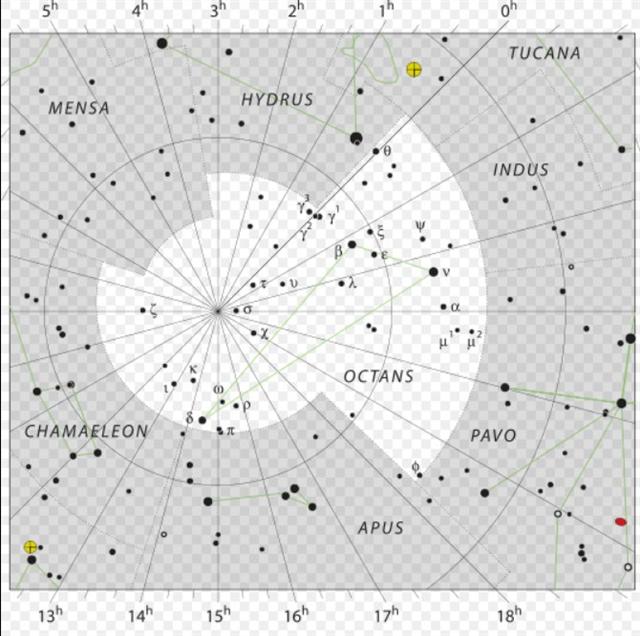 |
|
Jan 31 |
Febr
1 |
2 |
3 |
4 (400 = 80 + 320) |
|
°Jan 27 |
28 |
29
(*314) |
30 |
31 (396) |
|
'Jan 4 |
5
(*290) |
6 |
7
(372) |
8 |
|
SOLSTICE (*275) |
"Dec
22 |
23 |
X-MAS
EVE |
25 |
|
*175
= *316 - *141 |
*176 |
*177 |
*178 |
*179
= *320 - *141 |
|
JUNE 3 |
4 (155 = 5 * 31) |
5
(*441 = 9 * 49) |
6
(157 = 314 / 2) |
 |
 |
 |
 |
|
Ga3-15 |
Ga3-16 (75 = 548 - 472) |
Ga3-17 (548 = 441 + 107) |
Ga3-18 (77) |
|
κ Pyxidis (138.0), ε Pyxidis (138.5) |
π
Cancri (139.2),
MIAPLACIDUS = β Carinae
(139.3),
TUREIS (Little Shield) = ι Carinae
(139.8) |
no star listed (140) |
θ
Pyxidis (141.5),
MARKAB VELORUM =
κ
Velorum
(141.5),
AL MINHAR AL
ASAD (The Nose of the Lion)
=
κ
Leonis
(141.6),
λ
Pyxidis (141.9) |

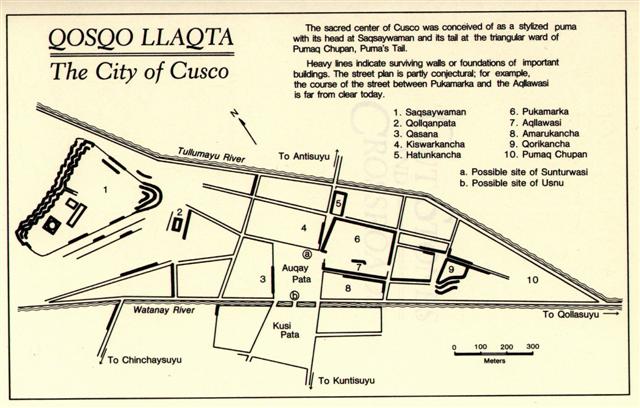
 |
|
6 |
7
(584 → Venus) |
Aug 8
(220) |
9
(*141) |
|
2
(214) |
3 |
°Aug 4 (216) |
5 |
|
10 |
11 |
'July
12 (193) |
13
(*114) |
|
26
(177 = 354 / 2) |
27 |
"June
28 (*99) → 2π |
29
(180 = 80 + 100) |
|
77 |
78 |
79 =
220 - 141 |
0h =
80 (= 157 - 77) |
|
CLOSE
TO THE FULL MOON: |
|
DEC 3 |
4 |
5 |
6
(340) |
|
α Oct. (321.5),
δ
Equulei (321.7),
φ
Capricorni (321.8) |
KITALPHA (Part of a Horse)
=
α
Equulei
(322.0),
ALDERAMIN (The Right Arm)
= α Cephei
(322.9) |
DAI = ι Capricorni
(323.5),
β
Equulei (323.8) |
γ
Pavonis (324.1),
YAN = ζ Capricorni
(324.6) |
|
5
(36) |
6 |
Febr
7 (403) |
8
(*324) |
|
°Febr
1 |
2 |
°Febr 3 (399) |
4 (*320) |
|
9 |
10 |
'Jan 11 (*296) |
12
(377) |
|
26
(360) |
"Dec
27 |
28
(*282 → 2 * 141) |
29
(363 = 3 * 121) |
|
*180 |
*181 |
*323
- *141 = *182 |
*183 |
|
JUNE 7 (*78) |
8 |
9 |
10 (161) |
11 |
12 |
 |
 |
 |
 |
 |
 |
|
Ga3-19 (78 = 158 - 80) |
Ga3-20 |
Ga3-21 |
Ga3-22 |
Ga3-23 |
Ga3-24 |
|
The Knot (Ukdah) |
5 Imix 9 Kumk'u
Rishu A.-13 (Head of the Lion)
ψ Leonis (146.4),
RAS ELASET AUSTRALIS
= ε Leonis
(146.6)
*105.0 = *146.4 - *41.4 |
VATHORZ PRIOR = υ Carinae
(147.9) |
|
Star-25 (Horse) /
ANA-HEU-HEU-PO-5 (Pillar where
debates were held)
ALPHARD
(The Horse) =
α
Hydrae
(142.3),
ω
Leonis (142.6),
τ¹
Hydrae (142.7) |
Al Tarf-7 (The End)
ψ
Velorum (143.3),
ALTERF = λ Leonis,
τ²
Hydrae (143.4),
ξ
Leonis (143.5)
*102.0 = *143.4 - *41.4 |
A Hydrae
(144.1)
VEGA (α Lyrae) |
Creation of our
present world
UKDAH
(Knot) = ι Hydrae
(145.4), κ Hydrae (145.5),
SUBRA = ο Leonis
(145.8)
*104.0 = *145.4 - *41.4 (= *288 -
*184) |
|
Itzam-Yeh
defeated |
28 May (148),
3149 BC |
|
1st 3-stone
place |
21 May (141),
3114 BC |
|
Creation of our
present world |
13 August (225),
3114 BC |
|
Och ta chan
(Hun-Nal-Ye
'entered or
became the sky') |
5
February (36),
3112 BC |
|
21 May, 3114 BC
- 5 February,
3112 BC = 542 |
|
542 'happens to
be' the sum of
365 days and 6 *
29½ nights. |

|
|
Aug 10 |
11 |
12 |
13 |
14 (*146) |
15 (227 → π) |
|
°Aug 6 |
7 |
8
(220) |
9 |
10 |
11 (*143) |
|
'July 14 |
15 |
16 |
17 (*118) |
18 |
19 (200) |
|
SIRIUS |
"July 1 |
2 |
3 (*104) |
4 (185) |
Te Anakena 5 |
|
81 (= 158 - 77) |
82 |
83 |
84 |
85 = 185 - 100 |
86 = 227 - 141 |
|
... Makoi replied, 'In Hiva the land
belongs to him - the land here is
mine, not his [tae oona]!'
They stayed (there longer). On the
fifth day of the month of July (Anakena),
they all got up, went downhill, went
on, and reached Hanga Te Pau.
They took their provisions with
them, carrying them on their
shoulders, went on, and reached
Te Pou. They made camp and slept
in Te Pou on the tenth of the
month of July (Anakena). Then
they all got up, carried their
provision on their shoulders, went
straight ahead, and followed the
path of the dream soul of Hau
Maka. They came to Hua Reva
and said, This is Hua Reva A Hau
Maka!... [E:21-22] |
|
CLOSE
TO THE FULL MOON: |
|
DEC 7 |
8 |
9 |
10 |
11 (345) |
12 (*266) |
|
Al Sa'd al Su'ud-22 (Luckiest of the
Lucky) /
Emptiness-11 (Rat)
TSIN =
36 Capricorni
(325.2),
ALPHIRK (The Flock) =
β
Cephei
(325.7),
SADALSUD
=
β
Aquarii,
ξ
Gruis (325.9) |
no star listed (326) |
CASTRA
= ε Capricorni
(327.2),
BUNDA
= ξ Aquarii
(327.5)
SIRIUS (α Canis Majoris) |
Mahar sha hi-na Shahū-26 (Western
One in the Tail of the Goat)
NASHIRA
=
γ
Capricorni
(328.0),
ν
Oct. (328.3), AZELFAFAGE
=
π¹
Cygni,
κ
Capricorni (328.7) |
Arkat sha hi-na Shahū-27 (Eastern
One in the Tail of the Goat)
ENIF
(The Nose) =
ε
Pegasi, ERAKIS =
μ
Cephei
(329.2),
46 CAPRICORNI,
JIH
(the Sun) =
κ
Pegasi
(329.3),
ι
Piscis Austrini (329.4),
λ
Capricorni (329.6),
ν
Cephei (329.7),
DENEB ALGIEDI
=
δ
Capricorni
(329.8)
*288.0 = *329.4 - *41.4 |
θ Piscis Austrini
(330.1), λ Octantis (330.7) |
|
Febr 9 (40) |
10 |
11 |
12 (408) |
13 (*329) |
All Hearts' Day |
|
°Febr 5 (36) |
6 |
7 |
8 (*324) |
9 |
10 (41) |
|
'Jan 13 (378) |
14 |
15 (*300) |
16 |
17 |
18 (383) |
|
"Dec 30 |
31 (*285) |
"Jan 1 (366) |
2 |
3 |
4 |
|
*184 = *325 - *141 |
*185 = *285 - *100 |
*(83 + 183 - 80) |
*187 |
*188 |
*189 |
|
6-5 (*76 = 75 + 1) |
46 |
7-22 (*123 = 2 * 61 + 1) |
85 |
10-16 (*209 = 13 * 16 + 1) |
231 |
6-5 (*441 = 9 * 49) |
 |
 |
 |
 |
|
Ga3-17 (76 = 548 - 472) |
Ga5-13 (123) |
Ga8-6 (209) |
Ga3-17 (548 = 441 + 107) |
|
366 |
|
472 = 8 * 59 (the lunar synodic
double month) = 1½ * 314 + 1 (=
365 + 107) |

|



